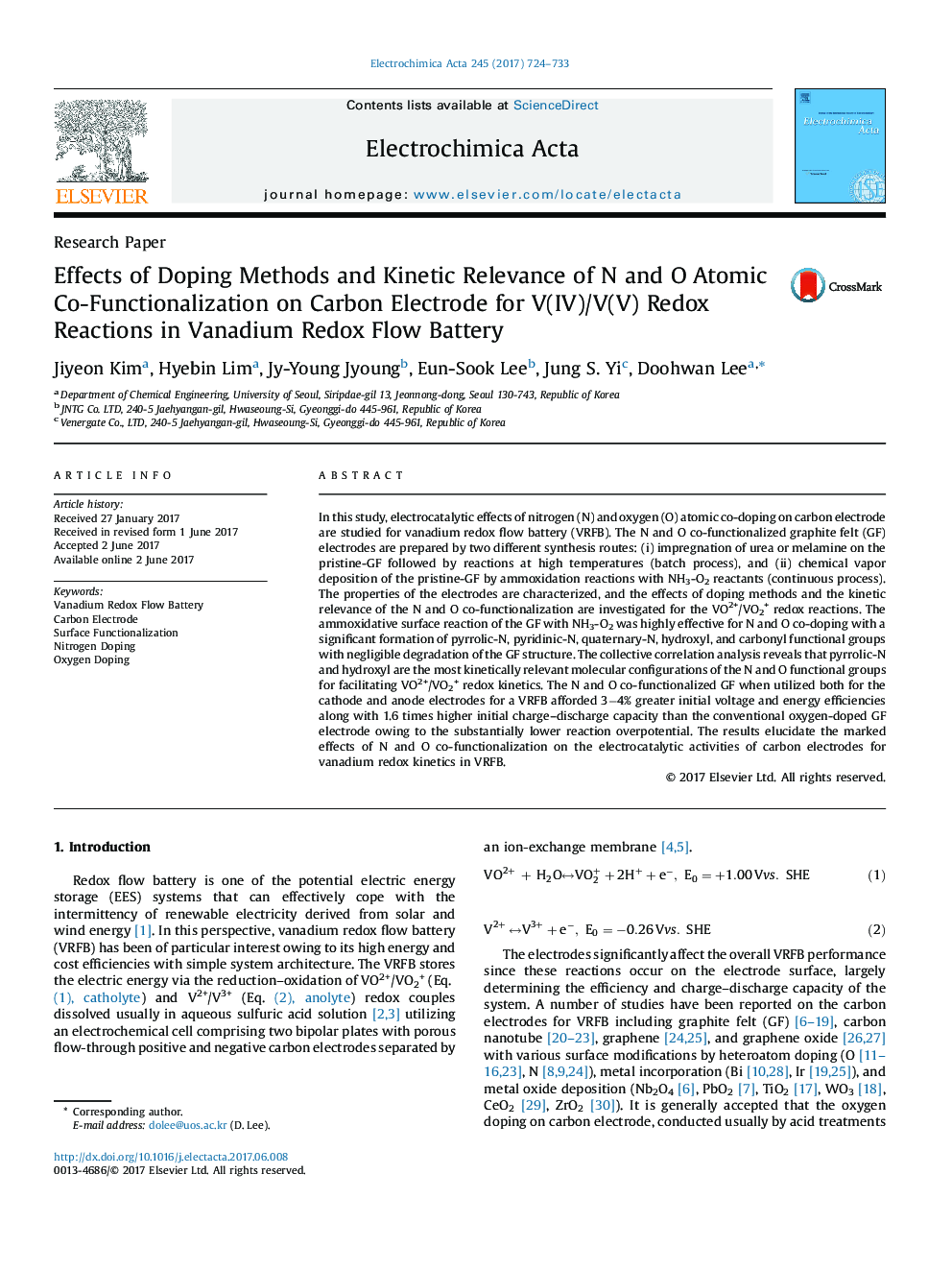| Article ID | Journal | Published Year | Pages | File Type |
|---|---|---|---|---|
| 6470856 | Electrochimica Acta | 2017 | 10 Pages |
â¢N and O atomic co-doping of carbon electrode was conducted by various methods.â¢Collective analysis was conducted for the electrode performance with the doped groups.â¢Pyrrolic-N and âOH groups were identified as the most kinetically relevant surface species.â¢High electrocatalytic performance of the electrode was demonstrated in a VRFB cell.
In this study, electrocatalytic effects of nitrogen (N) and oxygen (O) atomic co-doping on carbon electrode are studied for vanadium redox flow battery (VRFB). The N and O co-functionalized graphite felt (GF) electrodes are prepared by two different synthesis routes: (i) impregnation of urea or melamine on the pristine-GF followed by reactions at high temperatures (batch process), and (ii) chemical vapor deposition of the pristine-GF by ammoxidation reactions with NH3-O2 reactants (continuous process). The properties of the electrodes are characterized, and the effects of doping methods and the kinetic relevance of the N and O co-functionalization are investigated for the VO2+/VO2+ redox reactions. The ammoxidative surface reaction of the GF with NH3-O2 was highly effective for N and O co-doping with a significant formation of pyrrolic-N, pyridinic-N, quaternary-N, hydroxyl, and carbonyl functional groups with negligible degradation of the GF structure. The collective correlation analysis reveals that pyrrolic-N and hydroxyl are the most kinetically relevant molecular configurations of the N and O functional groups for facilitating VO2+/VO2+ redox kinetics. The N and O co-functionalized GF when utilized both for the cathode and anode electrodes for a VRFB afforded 3â4% greater initial voltage and energy efficiencies along with 1.6 times higher initial charge-discharge capacity than the conventional oxygen-doped GF electrode owing to the substantially lower reaction overpotential. The results elucidate the marked effects of N and O co-functionalization on the electrocatalytic activities of carbon electrodes for vanadium redox kinetics in VRFB.
